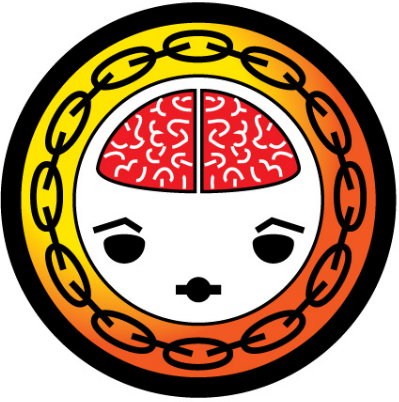As an old gal, I sidestep hype cycles. I watch in amusement as supply chain leaders surf the ups and downs of each cycle. Concepts like Cloud Computing, Big Data and Digital Transformation are hot until they are not. The focus comes and goes, as the advantages of new tech are absorbed into IT infrastructure.
My observation? Over the years, the cycles are shorter in duration and deliver less value.
AI Hype Cycle
Like a drunk at a bull riding contest, leaders are now riding the AI hype cycle. My concern is that most are attempting to “AI Stupid.”
I do not think that the goal should be the automation of existing planning processes. Instead, I think that we should be rethinking the role of the “planner” and “reinventing planning.” The role of the supply chain planner evolved when systems were tough to use and loading data/ running batch jobs was difficult. As defined today, the planning role is a no-win situation for the individual in the job.
Flawed by design, if we do a RACI analysis, we find that while the planner is Responsible for the plan, they are not Accountable for its outcome. In the role, the planner spends a lot of time Consulting the organization (often to no avail since the organization is not clear/aligned on value). The analysis is an outcome for their boss/larger organization to be Informed. There is usually no clarity on what defines a good plan.
The tension between responsibility and accountability in the planning process looms large in most organizations driving job dissatisfaction. In our research, we find the planning role to have the lowest job satisfaction rating in the supply chain organization. There is an opportunity to close the gap between responsibility and accountability using Agentic AI, but this requires the redesign of planning.
Lean Into the Answer
Most projects start with a discussion of Return on Investment (ROI). What is this worth to the organization? The worst place to start is a focus on cost. The myopic focus on functional costs throws the supply chain out of balance and degrades value.
My question is, “Could we apply lean concepts to supply chain planning to fund this transition?” While lean processes are often used in manufacturing. The concepts are seldom applied to planning.
Let’s use Wikipedia to start the discussions with definitions. Lean thinking focuses on maximizing value for the end customer by minimizing waste and improving collaboration. Got it. What about Agentic AI? While Robotic Process Automation (RPA) focuses on automating repetitive, rule-based tasks, Agentic AI introduces intelligence and adaptability, enabling autonomous decision-making and learning from experiences. Agentic AI is a class of artificial intelligence that focuses on autonomous systems that can make decisions and perform tasks without human intervention. The independent systems automatically respond to conditions, to produce process results.
As we think about the use of agentic AI in planning and the tensions between responsibility and accountabilities in the planning organization, the application of lean thinking is complimentary to the deployment of Agentic AI to reduce waste in planning. We could use agentic AI to constantly inform the responsible party that is accountable for the action as opposed to using a planner as an intermediary. The value proposition lies in the concepts that most supply chain leaders know well, but have never applied to planning.
Let’s get started. A focus on agentic AI to redefine planning focused on value, could address these opportunities:
- Define Value. Not all products are created equal. As we map value streams, there are trade-offs between, cost, cycle time, and customization. The supply chain leader needs to define “value” in the eyes of the customer in each channel/region while mapping internal organizational metrics to a balanced scorecard. Important to the discussion is the realization that cost is not value, and optimization of functional metrics based on cost optimization decreases value. In traditional supply chain planning processes, all products are treated as “equal” for most this is an opportunity.
- Map the Value Stream. The next step is to map each value stream from the point of purchase in the channel back through the value chain.
- Create Flow. The goal is to create flow. In the mapping, we often find that planning processes are a barrier to flow. (In your mapping think about the number of meetings, the lack of clarity what drives value, and
- Focus on Pull. Demand shaping programs –price, rebates, promotions–introduce demand decoupling points (push/pull) into the demand stream. Measure the effectiveness of demand shaping programs to drive understand demand shifting (movement of sales from period to period without increasing baseline lift) versus sales where the program is shaping demand (increasing sales over baseline demand).
- Minimize Waste. Today’s traditional supply chain processes can add to waste. In your value stream mapping, focus on minimizing waste in five areas:
- Forecast Value Added (FVA). Forecast Value Added methodologies helps companies to understand the value of demand planning versus the naive forecast. In my most organizations, conventional thinking creates a negative FVA which is a form of waste.
- Inventory Health. Inventory is the most important buffer and the greatest source of waste. In a study completed last year, we found only one company out of thirty measuring inventory health.
- Bullwhip Effect. The amplification of the signal across nodes and functions increases the bullwhip effect increasing waste. Measure it and reduce the impact.
- Process Efficiency. Improve process efficiency. Answer key questions and gain answers to questions like:
- First Pass Tender. What are the number of times that a load has to be tendered? How does this affect the order cycle? How do I get a better signal to carriers?
- Returns. Why are products returned? What are the root issues?
- Hands-Free Orders. Why are orders not being processed hands free? What are the barriers?
- Perpetual Inventory Latency: What is the latency for the perpetual inventory signal to customer service and online ordering systems?
- Perfection. Measure FVA, inventory health, bullwhip effect and process efficiency religiously and drive improvement through Kaizen events.
Wrap-up
I don’t understand why companies are not applying lean concepts to planning or using new form of analytics to reinvent planning. Instead, most supply chain planning technologies are focused on slathering AI on top of existing planning definitions, which I don’t see as helping.
Last week, I had a conversation with a new start-up named Lyric. Veterans from over twenty years of building optimizers and platforms, they have built an architecture to allow business leaders and data scientists to create custom code to help bridge the gaps of conventional planning software. As they briefed me, I smiled. Perhaps there is a role for custom code to fill the void as traditional supply chain planning technologies go on their merry way trying to AI stupid?
Update on Ask Lora
Want to know more about outside-in processes? The six training classes on outside-in supply chain planning processes are now updated in the Large Language Model (LLM), Ask Lora, which I released this month. If you are seeking insights on how to redesign planning to better align responsibilities and accountabilities, I think this is a great place to start.
As always, I welcome your feedback.







